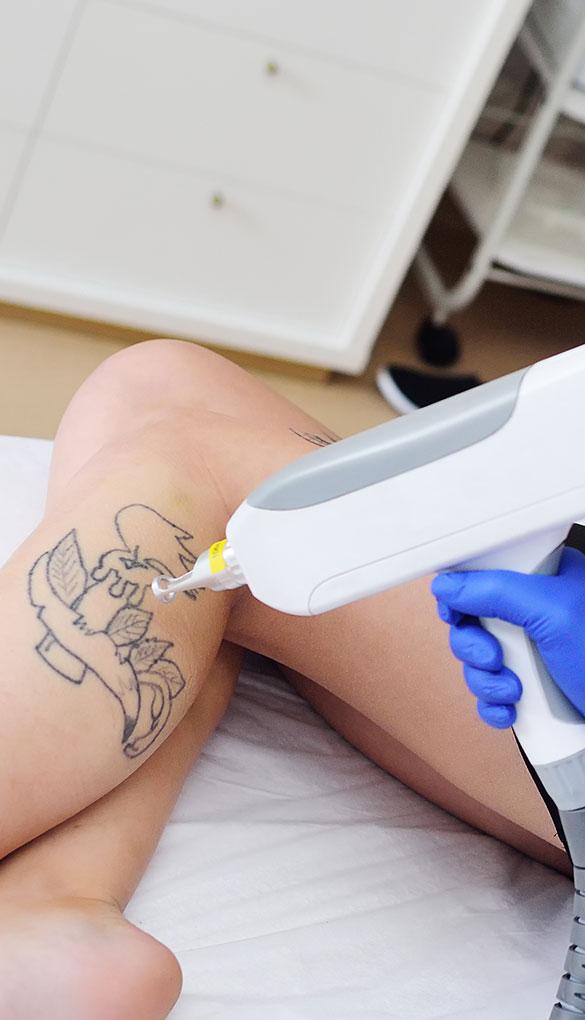Laser Tattoo Removal safety
Laser tattoo removal is a popular method of removing unwanted tattoos. It works by using intense pulses of light to break down the ink particles in the skin which are then removed by the body’s immune system. While laser tattoo removal is generally considered safe, there are still some risks and potential side effects that should be considered before undergoing the procedure.

The first thing to consider when evaluating the safety of laser tattoo removal is the qualifications of the person performing the procedure. Laser tattoo removal should only be performed by a licensed and registered professional. These professionals have the necessary training and expertise to safely operate the laser equipment and manage any potential complications that may arise.
One of the most common side effects of laser tattoo removal is skin irritation. The laser energy used to break down the ink particles can cause redness, swelling and even blistering in the treated area. While these side effects are usually temporary and will heal on their own over time they can be uncomfortable and unsightly. In some rare cases the skin may also become discoloured or scarred after the procedure. However, the risk of scarring can be minimized by using the correct laser settings and following proper aftercare instructions.
Another potential risk of laser tattoo removal is the possibility of infection. Any time the skin is broken there is a risk of infection. This is especially true in the case of tattoo removal where the skin is already damaged from the original tattooing process. To minimize the risk of infection it is important to keep the treated area clean and dry and to follow any instructions provided by the technician performing the procedure.
Despite these potential risks laser tattoo removal is generally considered safe when performed by a qualified professional. The procedure is non-invasive and does not require any anaesthetic or incisions which means there is less risk of complications compared to other cosmetic procedures. Additionally, the laser energy used in tattoo removal is highly targeted which means it only affects the ink particles in the skin and does not damage the surrounding tissue.
When considering laser tattoo removal it is important to have realistic expectations about the results. Depending on the size, location and colour of the tattoo multiple sessions may be required to achieve the desired outcome. It is also important to note that not all tattoos can be completely removed and some may only fade or become less noticeable after treatment.
In addition to the risks and benefits of the procedure itself there are also some factors that may affect the safety and efficacy of laser tattoo removal. For example, individuals with darker skin tones may be at a higher risk of discoloration or scarring after the procedure as the laser energy may also target the melanin in the skin. Similarly, tattoos on certain parts of the body may be more difficult to remove such as those on the hands, feet or face.
In conclusion, laser tattoo removal can be a safe and effective way to remove unwanted tattoos. However, it is important to carefully consider the potential risks and side effects and to only undergo the procedure with a qualified and experienced professional. By following proper aftercare instructions and having realistic expectations about the results you can minimize the risks and achieve the best possible outcome.
You can check out our Price list or if you would prefer a more accurate quote why not use our Personalised quick quote form below. Alternatively book a Free Consultation for more information.
Check out our gallery to see for yourself how effective our treatments have been.














